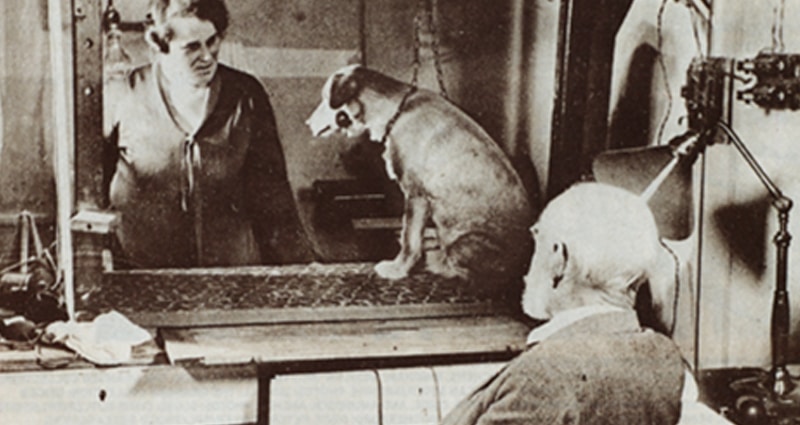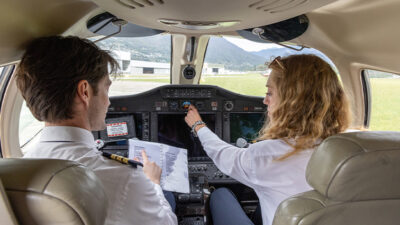Pavlov’s Dogs Had it Right

Note: In the 1890s, a Russian psychologist named Ivan Pavlov noticed that his dogs began salivating even before they were presented with their food—his mere entrance into their room triggered the salivation. He began ringing a bell before he entered to feed them, and eventually the dogs began salivating when they heard the bell—whether he fed them or not. This is considered a prime example of classical conditioning (stimulus/response).
We used to teach Greek and Latin to high school students to prepare them for college and life beyond. Now we teach them remedial English in college. Where’d we go wrong?
I’m not sure about that, but I think that preparation is critical to success in aviation. Recently I saw a report from a pilot who got a GPWS warning while descending at night in mountainous terrain. They had misunderstood their clearance and started down early. He likened himself to one of Pavlov’s dogs in terms of executing the terrain avoidance maneuver. Later he second-guessed his actions:
“It was probably an overreaction (doing the full maneuver). I mean, it cost us the thrash of getting another approach. I knew where I was—I could see the field in the distance.”
Don’t second-guess yourself when you’ve done the right thing. You got the warning, you followed the procedures, you and your passengers arrived 10 minutes later than planned, but you arrived safely. Besides, as the FO put it:
“If you’re descending at night in mountainous terrain, and you get a GPWS warning, do you really know where you are?”
Great point. So, what’s this got to do with preparation? Lots.
Hours of practice in the sim had turned the crew into one of Pavlov’s dogs. When the alarm sounded, they did—and this is important—exactly what they were supposed to do. Training at 1 G, zero knots, and zero AGL saves us from having to do the hard thinking when we get the GPWS warning descending through 8,000 feet at 180 knots at night in mountainous terrain when we’re upside down with our circadian rhythm and at the end of a long leg. In this case, the training and the response were spot on. There is one area where our training and response to that training still haven’t hit home: Stabilized Approaches.
Virtually every flight department now has stabilized approach criteria. Some have criteria that differentiate between requirements for VMC and IMC. Others have a simpler “one-size-fits-all” approach. Where we fall away from perfection is in the execution of these procedures. The Flight Safety Foundation’s review of FOQUA data shows that crews hit the stabilized approach criteria 95% of the time—that’s an “A” in most classes. Unfortunately, in the 5% of approaches that are unstable, 95% of them continue to landing (or runway excursion). This 95%—those that continue an inappropriate course of action—are failures. Failures of training. Failures of preparation, and failures of enforcement. These are the pilots that need the aviation equivalent of remedial English in college.
An “Unstable” call should have the same Pavlovian response level that a GPWS warning does. “Unstable” should be followed immediately by “Go Around.” It’s not a suggestion.
“Well, what if I’m correcting?” is a common response. Good question. Let me rephrase it: “I’ve had the entire descent and approach to get my act together and fly a stable approach, but here I am at 500 feet, unstable. Shouldn’t I be given the last 500 feet to salvage my pride?”
No. You should go around. Unstable means “Go Around.” Don’t second-guess the decision. It’s what someone with true professionalism and discipline would do. So, swallow your pride, take it around, and try that last 500 feet from a stable position. Successfully prepare and you’ll be prepared for success. Make the decision when it’s easy.

Convergent Performance is uniquely dedicated to reducing human error in high risk environments.
http://www.convergentperformance.com/
© 2024 Convergent Performance. All Rights Reserved.
Next ArticleRelated Posts

Safety in Numbers: Trends in Aviation Accidents and Incidents
Every accident is preventable; the problem is that we don’t know how to prevent it until after the accident happens. However, what we can do as an industry is honor the anguish of each event by sharing the information, the mistakes and the outcomes to improve safety for everyone.

The Flip Side of Psychological Safety
From a human factors perspective, we might be evolving towards a partial power situation. In the evolving landscape of workplace dynamics in pursuit of improved safety, the concept of psychological safety has gained significant traction. It’s the bedrock of an organizational culture that fosters open communication, innovation, and growth.

